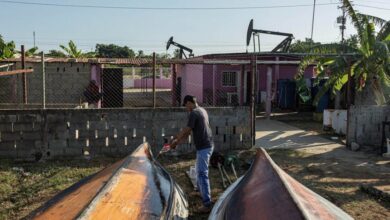The “opioid crisis” in Latin America is one of undertreatment and suffering
It is important that organizations involved in the education, regulation, and marketing of opioid analgesics work together to encourage proper use and monitoring of these medicinal products

LatinAmerican Post Staff
Listen to this article
The “opioid crisis” in Latin America is not one of addiction but of pain mismanagement and unnecessary suffering
The “opioid crisis” in some developed countries is characterized by the prolonged and indiscriminate use of prescription opioids. This has had a profoundly negative impact on pain management. Although scientific evidence supports the safe use of opioids, there is still significant reluctance around the use of these analgesics.
Leer en español: La "crisis de opioides" en América Latina es de subtratamiento y sufrimiento
The most significant problem for appropriate pain management has been the negative perception of these analgesics, known as opiophobia. Furthermore, in Latin America and for most of the world's population, access to and availability of these medicinal products are still inadequate and lead to unnecessary suffering as a result.
The Latin American Federation of IASP Chapters (FEDELAT) recently convened a group of experts from the region (from Mexico to Chile, including the Caribbean) in São Paulo, Brazil to prepare a position paper on appropriate opioid use in chronic pain. It seems that opiophobia is now the norm in Latin America and it is making people suffer unnecessarily.
Most people dying of terminal chronic diseases in developing countries do not have access to controlled medicinal products for pain management. Worldwide, around 25 million people died in 2015 of terminal chronic diseases. Approximately 80% of these were in developing countries, and many of them died suffering from pain.
According to FEDELAT, the situation in Latin America regarding access to and availability of opioids is still limited and is below 100 statistically defined daily doses. Countries with the lowest recorded consumption include Guatemala, Ecuador, and Bolivia. In Chile, Argentina, Colombia, Brazil, and Uruguay, opioid consumption has been successfully raised to 200 statistically defined daily doses. However, this figure is still not sufficient for adequate pain management.
Also read: Mestizaje is a major source of racial attitudes in Latin America
On the other hand, there is a lack of studies which have looked at opioid abuse by pain patients in Latin America. There are some data about the prevalence of prescription opioid exposure at least once in a person's life, with an incidence of around 1%. Problems with abuse occur mainly with alcohol, marijuana, and cocaine. Thus, the perceived abuse risk of opioids in Latin America is very low.
FEDELAT concludes that public health organizations in Latin America should improve their ability to produce statistics to facilitate greater understanding of the actual situation in the region. It is important that organizations involved in the education, regulation, and marketing of opioid analgesics work together to encourage proper use and monitoring of these medicinal products. These measures could lead to a decrease in opiophobia, which has risen in Latin America.
The opioid crisis in Latin America is different from the one currently unfolding in the United States, Canada, and other developed countries. Our current crisis is one of undertreatment and suffering.





